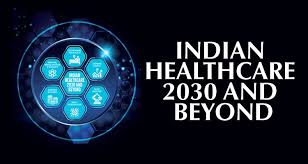Introduction:- India, a nation pulsating with vibrant culture and rapid economic advancement, is grappling with a silent, yet pervasive health crisis. Beyond the headlines of progress lies a stark reality: the alarming rise of obesity, the relentless surge of diabetes, and the insidious decline in vision health. These interconnected challenges, a triple threat, are not mere statistics; they represent a profound strain on individuals, families, and the nation’s healthcare infrastructure.
1. Understanding the Obesity Epidemic
Key Phrase:Urbanization and Sedentary Lifestyles India’s urban landscape is witnessing a dramatic surge in obesity, particularly among children and adolescents. The culprits are multifaceted:
- Changing Dietary Habits: A shift from traditional, home-cooked meals to processed foods, sugary drinks, and fast-food consumption.
- Sedentary Lifestyles: Increased reliance on digital devices, reduced physical activity, and a culture of convenience.
- Socioeconomic Factors: Affordability and accessibility of unhealthy food options.
Highlighted Word:Consequences
- The consequences of obesity extend far beyond aesthetic concerns, leading to:
- Cardiovascular diseases (heart attacks, strokes).
- Type 2 diabetes.
- Musculoskeletal disorders.
- Certain types of cancer.
- Key phrase:Childhood obesity crisis
- We must address the childhood obesity crisis with urgency, as it sets the stage for chronic illnesses in adulthood.
Point: Public health campaigns, nutritional education, and accessible recreational facilities are crucial interventions.
2.”Sugar Capital”: The Diabetes Surge
The healthcare burden due to diabetes places immense strain on the nation’s medical resources.
Key Phrase:Insulin Resistance and High Sugar Consumption India’s status as the “diabetes capital of the world” is a stark indictment of our dietary habits and lifestyle choices.
- High Sugar Consumption: The widespread availability and affordability of sugary beverages and processed foods contribute to insulin resistance.
- Genetic Predisposition: While lifestyle factors play a significant role, genetic predisposition also contributes to the rising prevalence of type 2 diabetes.
Highlighted Word:Complications
- The complications of diabetes are debilitating and life-threatening:
- Kidney disease.
- Nerve damage.
- Cardiovascular complications.
- Retinopathy (eye damage).
Point: Early detection, lifestyle modifications, and access to affordable healthcare are essential for diabetes management. Key Phrase:Healthcare Burden
- The healthcare burden due to diabetes places immense strain on the nation’s medical resources.
3.Silent Erosion of Vision: Vision Loss
Key Phrase:Preventable Blindness and Digital Strain Beyond the well-documented challenges of obesity and diabetes, India faces a silent epidemic of vision loss.
- Cataracts and Glaucoma: Millions suffer from preventable blindness due to cataracts and glaucoma, often due to limited access to eye care, particularly in rural areas.
- Refractive Errors: Uncorrected refractive errors impair vision and productivity.
- Digital Strain: The increasing reliance on digital devices, especially among younger generations, raises concerns about the long-term impact on vision.
Highlighted Word:Accessibility
- The accessibility of eye care services, especially in rural areas, is a critical concern.
Point: Public awareness campaigns, affordable eye care services, and vision screening programs are essential interventions. Key Phrase:Environmental Pollution and Eye Health
- Environmental pollution and eye health are linked, especially in highly urban areas
4.Interconnected Web: Lifestyle, Socioeconomics, and Environment
Key Phrase:Holistic Approach and Social Determinants of Health These three health challenges are not isolated issues; they are intricately linked, influenced by:
- Lifestyle Factors: Dietary habits, physical activity, and stress levels.
- Socioeconomic Disparities: Poverty, lack of education, and limited access to healthcare.
- Environmental Influences: Air pollution, water contamination, and climate change.
Highlighted Word:Interconnectedness
- The interconnectedness of these issues necessitates a holistic approach to health promotion.
Point: Addressing the social determinants of health is crucial for long-term health improvements. Key Phrase:One health initiative
- The one health initiative must be used, to have an interdisciplinary approach to these problems.
5.Pathways to Change: Solutions and Prevention
Key Phrase:Public Health Interventions and Community Engagement Addressing these challenges requires a multi-pronged approach:
- Promoting Healthy Lifestyles: Encouraging balanced diets, regular exercise, and limiting sugar intake through public health campaigns and educational programs.
- Improving Access to Healthcare: Expanding access to affordable healthcare, particularly in rural areas, and strengthening primary healthcare services.
- Education and Awareness: Raising awareness about the risks of obesity, diabetes, and vision loss, and promoting preventive measures.
- Government Initiatives: Implementing policies that promote healthy food choices, regulate the food industry, and improve environmental conditions.
- Community Engagement: Empowering communities to take ownership of their health through participatory programs and initiatives.
Highlighted Word:Empowerment
- Empowerment of individuals and communities is essential for sustainable health improvements.
Point: Investing in preventive care and health promotion is more cost-effective than treating chronic diseases.
Conclusion:
The triple threat of obesity, diabetes, and vision loss poses a significant challenge to India’s health and well-being. However, it is not insurmountable. By acknowledging the interconnectedness of these issues, adopting a holistic approach, and implementing comprehensive strategies, India can forge a healthier future for its citizens. Let us prioritize empowerment, invest in public health interventions, and foster a culture of health and well-being.
